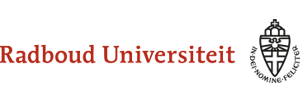American English Phonetics
Another American English Faculty Project
11.4.2 Affricates and Place of Articulation
Palato-alveolar affricates: /t͡ʃ,d͡ʒ/
For GA /t͡ʃ,d͡ʒ/ a closure is formed between a large area of the tongue, including the tip, the blade and a part of the front, and the alveolar ridge as well as the forward part of the hard palate. A combination of plosion and friction is produced by the abrupt release of the tip of the tongue and a slow release of the closure between the blade and the front of the hard palate. Liprounding and lip protrusion are common, irrespective of the nature of the following vowel.
Advice for Dutch learners:
Dutch speakers tend to replace initial GA /t͡ʃ,d͡ʒ/ with Dutch /ʃ,ʒ/ and final /t͡ʃ,d͡ʒ/ with Dutch /t͡ʃ/ or /ts/, as in chips, John, match, bridge (i.e. /ʃɪps, ʒɔn, mɛt͡ʃ (mɛts), brɪt͡ʃ (brɪts)/). More advanced speakers may use AN /tj,dj/, which are realized as the palatal stops [c] and [ɟ], e.g. in chips, education ([ˈcɪps, ˈɛɟuˈkeˑʃən]). AN /t͡ʃ/, as in Tsjech, has a pre-palatal contact between the front of the tongue and the front of the hard palate, with the tip and blade hanging down. The fricative has [i]-resonance. Remember that GA /ʃ,ʒ/, also when combined with /t,d/, have [u]-resonance.
Try to involve the tip and blade in the articulation of GA affricates and bring the lower jaw forward to facilitate ‘open’ liprounding, i.e. liprounding with protrusion of the lips. Special practice may be required for sequences consisting of affricate + affricate or sibilant + affricate, as in the following examples:
Dutch cheese
Dutch cheese
such joy
such joy
large jars
large jars
watch Jane huge chests George jumped
fresh juice this judge his jokes
question his chin change jobs
